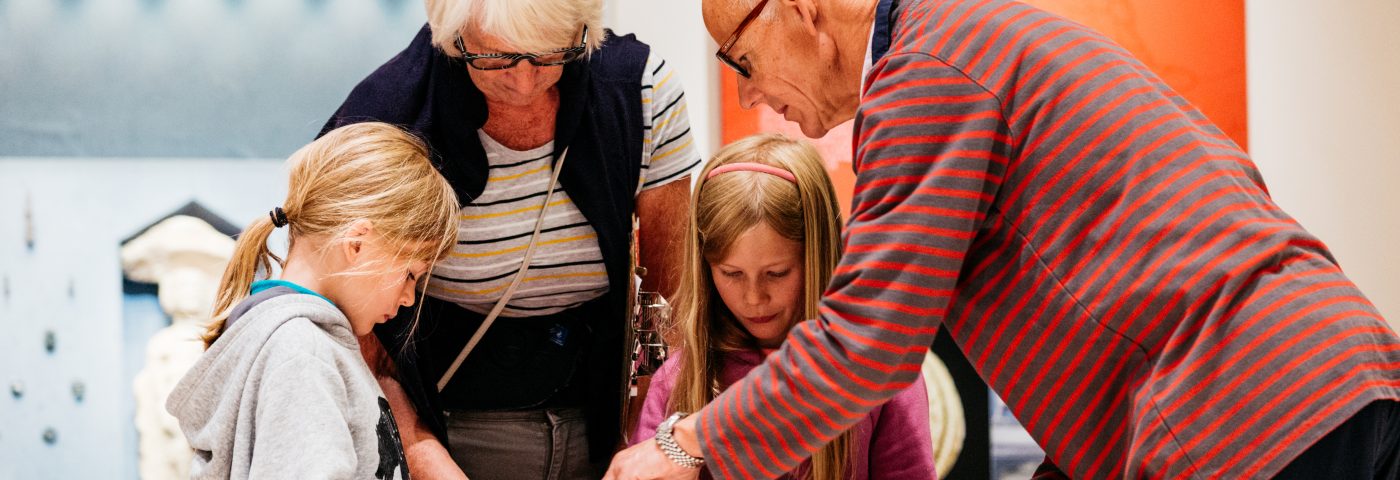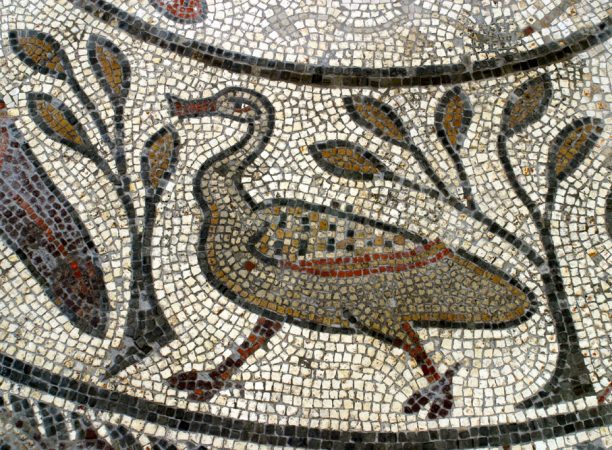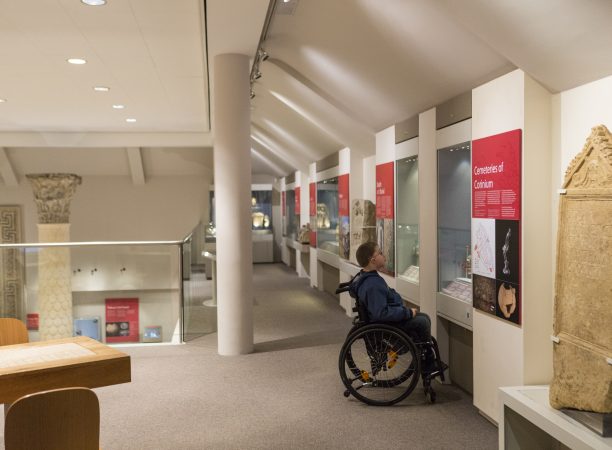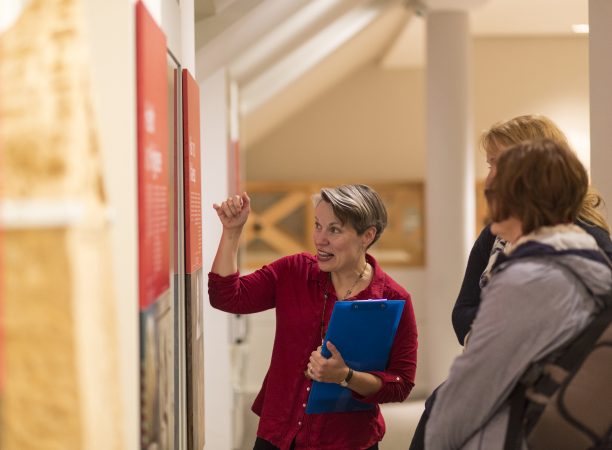Home to one of the largest collections of Romano-British antiquities extensively from Corinium, Roman Britain’s second largest city. Admire the work of Prehistoric metal smiths. Experience life as a Roman. Marvel at the stunning mosaics as you take a peek through the window of a Roman Town house. Come face to face with the Anglo Saxon and their buried treasure. Be amazed by Medieval Sculpture, Civil War coin hoards and experience the elegance of Georgian Cirencester.
There is a lot to see, so we recommend allowing at least 1-2 hours to make the most of your visit.
Take a Gallery Tour before your visit
Take a virtual tour around the museum to explore the Prehistoric, Roman, Saxon and Medieval Galleries.
Quiet afternoon visits
If you prefer a peaceful and reflective visit, we advise afternoon visits after 2pm on weekdays. The museum accommodates school groups throughout the year and we want to ensure an enjoyable and welcoming visit for all. Please call 01285 655611 if you would like further information about visiting the museum.
Please feel free to download a copy of our museum floorplan before your visit.
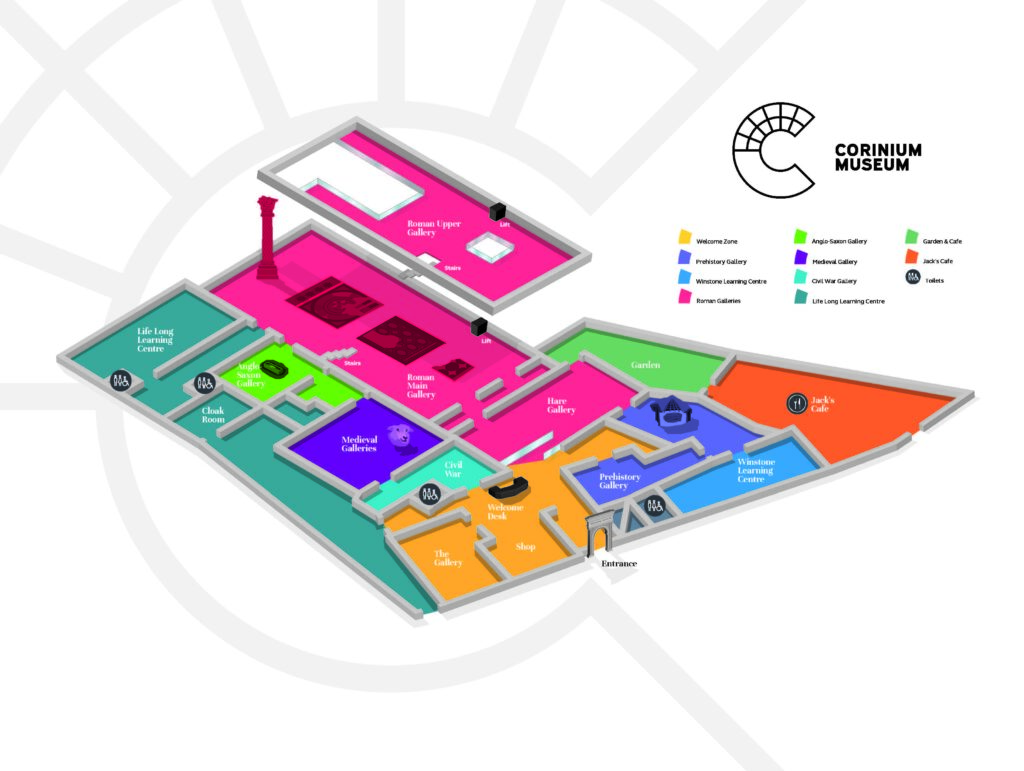
Welcome Zone
Welcome to Corinium Museum, as you enter the museum you will be greeted at our Welcome Desk which is also home to the Cirencester Visitor Information Centre. Inspired by the museum’s wonderful collection our shop has a great range of historically themed souvenirs and books. The Gallery is a space where art meets archaeology with a changing programme of art exhibitions.
Prehistory Gallery
Stretching all the way back to the Paleolithic and going right up to the construction of the Roman fort, this gallery will show you more than 200,000 years of history about life in the Cotswolds. Follow the evolution of technology and see how stone tools changed over time from the Paleolithic through to the Neolithic, before being replaced by bronze and then iron tools. Marvel at the beauty of the craftsmanship of collections, such as the Poulton gold hoard dating back to the Bronze Age, or gaze at the mighty tusk of a mammoth from the Ice Age. You can also wave hello to our Iron Age dog, Rusty!
Main Roman Gallery
Roman Corinium was inhabited for nearly 400 years, and was the second-largest Roman settlement in Britain after London. As the capital of Britannia Prima, there was much wealth in the town, and this is evident through the multiple beautiful mosaics on display. The Hare, Hunting Dogs, Four Seasons and Orpheus mosaics all have one shared theme of animals and nature, which demonstrates how closely the people in this town were to nature in their everyday lives. As well as the mosaics, the gallery contains many objects excavated from the Forum, as well as a reconstruction of a Roman hypocaust.
Roman Upper Gallery
Learn all about the lives of the people of Roman Corinium in the upper Roman gallery. Hear the dead speak at the tombstone display; learn about the farming and agriculture of the region; discover Corinium’s close links with Mercury, the Mother Goddesses and the mysterious Genii Cucullati; and learn how children were taught to read and write, as well as the games they would play! Lastly, discover the rich and varied industries of this bustling Roman town: roof tiles, blacksmithing, jewellery and more!
Anglo-Saxon Gallery
In 1985 a large Anglo-Saxon graveyard was discovered in Lechlade. It contained 199 graves with 219 remains, and several dozen cremations as well. In this gallery you can see many of the interesting artefacts recovered from Butler’s Field. Marvel at the craftsmanship of the gold jewellery found in many graves, most of them inlaid with precious stones all the way from the Indian Ocean! See the fierce weapons that some of the men were buried with, and the wonderful weaving tools many women were buried with, showing the beginnings of the Cotswold wool trade.
Medieval Gallery
The abbey in Cirencester was a large presence in the town until it was dissolved by order of Henry VIII in the 1539. In this gallery you can learn all about the lives of the monks and gaze upon the weird and wonderful corbels from the abbey that still survive. Cirencester was also home to the booming wool trade in the Tudor period and you can see a prime example of the proud Cotswold Lion sheep, as well as an imposing portrait of John Coxwell, a wealthy wool merchant to lived to be 101 years old!
Post-Medieval/Modern/Civil War and 18th & 19th C Gallery
Cirencester played an important role in the Civil War. In this gallery you can discover the town’s involvement in key Civil War battles , as well as see an incredible hoard of coins found underneath someone’s floorboards! You can also learn more about the later developments in the town and the rich social history of Cirencester during the past 200 years.
Useful information for your visit
How to find us
Coming to visit? Find out more about how to find us, parking, and travel information.

